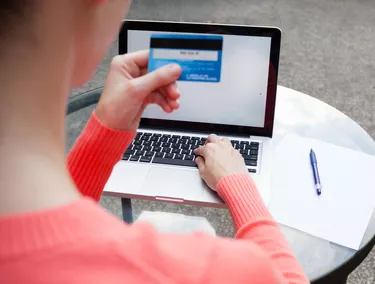
Providing an extra layer of protection for credit card purchases, the card verification code, or CVC, is a three or four-digit number found on all major brands of credit cards including MasterCard, Visa, Discover and American Express.
Also Known As
Video of the Day
The CVC code may be called another name, depending on the card's issuer, network or type. Other names include:
Video of the Day
- Card validation code (CVC)
- Card verification value (CVV)
- Card security code (CSC)
- Card verification data (CVD)
- Card verification number (CVN)
- Card verification value code (CVVC)
- Verification code (V-Code)
- Signature panel code (SPC)
- Card identification verification (CID)
The merchant you use may also determine what it's called. For example, Hilton calls it a CVV, while Skype refers to it as a CVC.
A "1" or "2" after the letters refers to the where the code is written on the card. For example, the CVV1 is written in the magnetic strip, while the CVV2 refers to the actual three or four digits printed on the card.
Where It's Located
- American Express -- the four digits above the card number on the right-hand side on the front of the card.
- Discover, MasterCard and Visa -- the last three digits at the end of the signature box on the back of the card.
When It's Used
You don't need to provide the CVC code when making in-store purchases, because the code is embedded in the magnetic stripe and verified when you swipe your card. However, when you make online or phone purchases, you'll most likely give the number to the merchant because the card isn't being swiped. According to Card Hub, some merchants may not ask for the code to prevent a potential barrier to making a sale.
Providing the CVC code shows that you have possession of the genuine card and that you're not making a fraudulent purchase. Merchants and online retailers cannot store the CVC code, so a thief's ability to use your credit card for online and phone purchases is lowered even if he steals your credit card.